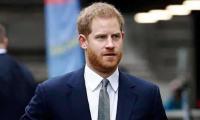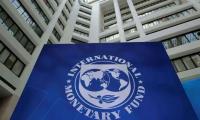Glancing upward at one of the six US manufactured aerostat blimps performing constant surveillance over Kabul, I wonder if the expensively high-tech giant’s-eye view encourages a primitive notion that the best way to solve a problem here is to target a ‘bad guy’ and then kill him. If the bad guys appear to be scurrying dots on the ground below, stomp them out. Crushing only the right dots has proven very difficult for a US drone warfare programme documented to have killed many civilians. Was that simple prediction available to the US’ giant’s-eye view? My young friends among the Afghan Peace Volunteers have shown me a vastly different approach toward problem solving.
What has brought a non-violent future closer to Afghanistan – giant sized military and surveillance systems or the accomplishments of young volunteers working to develop inter-ethnic projects? 20 teams are working at the Borderfree Centre organising practical activities within communities coping with multiple economic woes, including food insecurity, unemployment, and inadequate income for meeting basic needs.
Young people travel to and from the Centre along unpaved roads lined on both sides with sewage filled drainage ditches. Traffic is chaotic, and the air is so polluted that many wear protective face masks. Day labourers congregate at intersections waiting in desperation for the opportunity to perform hard labour for $2.00 a day or less. Throughout Kabul, refugees crowd into squalid, sprawling camps where people live without adequate protection from harsh weather. Nisar, one of the students at the Borderfree Centre’s Street Kids School, understands destitution all too well. He has been earning an income for his family since he was a small child, working as a shoeshine boy on Kabul streets and also in a butcher shop.
Now, at age 17, he will soon graduate from three years of classes with the Street Kids School. In the past year, he has been a steady volunteer, taking on responsibilities with the duvet project and the organic gardening team. Nisar says that when he first came to the Centre, three years ago, he felt astonished to see people from different ethnic backgrounds sitting together. Nisar’s family comes from the Wardak province, and relatives of his are among those who recently fled the Taleban. He clearly understands the terrible risks that armed struggle could bring, even here in ‘Ka-bubble’ as Kabul is sometimes called because of the relative calm that still prevails here. In spite of tensions, Nisar feels sure that when people learn to overcome their fears and start talking with one another, they can set aside hatreds taught to them at young ages.
US planners, heads lost in the sky, seemingly pay little heed to developing ways of building trust. Resources are gobbled up by gigantic multinational ‘defence’ companies dedicated to the task of further, trampling warfare, while withholding anything like the quantity of resources needed for the task of repairing the wreckage they themselves have caused. US think tanks cleverly promote cartoonised versions of foreign policy wherein the mighty giant strikes a fist and eliminates the ‘bad guy’ whom we are told has caused our problems. But I believe US people would be better off if we could see the often-suffering communities that show admirable qualities as they try to survive.
We could learn from their efforts to build mutual trust and solidarity, and their courage to reject war. US people should earnestly ask how the US could help build trust here in Afghanistan, and, as a first step, begin transferring funds from the coffers of weapon companies to the UN accounts trying to meet humanitarian needs. The ‘giant’ could be seen stooping, humbly, to help plant seeds, hoping for a humane harvest.
This article has been excerpted from: ‘Building trust in Afghanistan’.
Courtesy: Counterpunch.org
Representational image. — APP FileOnce again there is debate surrounding the National Finance Commission Award,...
Pakistani human rights activist and Supreme Court lawyer Asma Jahangir died on February 11, 2018. — AFPAn annual...
Representational image. — APP FileThe meltdown of Pakistan’s economy needs immediate attention. Political unrest...
A health worker administers polio vaccine drops to a child during a door-to-door polio vaccination campaign in Lahore,...
Armed militants of the banned Tehreek-e-Taliban Pakistan pose for a photograph in Orakzai Agency. —...
An aeroplane of the national flag carrier of Pakistan is seen in this file photo. — AFPWhile Pakistan considers...







